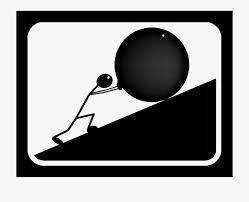Mastering Strategic Decision-Making: A Framework for Effective Problem Solving
In today's dynamic world, effective decision-making is paramount, whether navigating personal challenges or leading complex business strategies. The ability to precisely frame a problem is the cornerstone of finding successful solutions. This article delves into the crucial elements of robust decision-making, highlighting the pivotal role of problem framing and providing practical strategies for improved outcomes.
From everyday choices to high-stakes corporate decisions, the choices we make shape our lives and determine our success. However, effective decision-making is not intuitive; it demands a structured approach and a deep understanding of the underlying issues. This process begins with a thorough understanding of the problem itself – effective problem framing.
Problem framing goes beyond mere problem identification. It involves a comprehensive analysis of the problem's underlying causes, context, and potential consequences. Instead of addressing superficial symptoms, effective framing delves into the root causes, enabling more precise and impactful solutions. This deeper understanding ensures that solutions address the core issue rather than simply treating the symptoms.
Complex problems often benefit from decomposition—breaking them down into smaller, manageable parts. This simplifies analysis and allows for a focused examination of each component. Consider a company experiencing declining sales. Instead of solely focusing on the revenue drop, a detailed analysis might uncover contributing factors such as increased competition, ineffective marketing, poor customer service, or shifts in market demand. By isolating these factors, tailored solutions can be developed to address each specific issue effectively.
Exploring multiple solutions is critical. Avoid prematurely settling on the first idea. Instead, brainstorm a wide range of potential approaches, carefully assessing their feasibility, potential impact, and associated risks. This broader perspective drastically increases the likelihood of identifying the optimal solution. This thorough exploration ensures that no viable option is overlooked.
For example, a student considering higher education should explore a variety of universities, programs, and locations. This comprehensive research process uncovers a wider range of possibilities, aligning better with individual goals and circumstances, leading to a more informed and ultimately more fulfilling decision.
Thorough risk assessment is vital. A cost-benefit analysis for each potential solution provides a clear evaluation of potential rewards and drawbacks. This analytical approach fosters objectivity and minimizes unforeseen negative consequences. This careful assessment allows for a more informed and less risky decision-making process.
Consider a career change. A comprehensive assessment should factor in financial stability, job security, opportunities for growth, and work-life balance. Carefully weighing these factors leads to a decision aligned with long-term aspirations and personal values. This thoughtful consideration ensures that the decision aligns with individual priorities and goals.
Collaboration and stakeholder engagement are essential, especially in professional environments. Involving diverse perspectives and expertise enriches the decision-making process. Open dialogue and brainstorming sessions foster collective intelligence, resulting in more robust and innovative solutions. A collaborative approach leverages the collective knowledge and experience of all involved parties.
Effective time management is crucial. Prioritize tasks based on urgency and importance, establish realistic deadlines, and allocate resources strategically. This ensures timely decisions and prevents unnecessary delays. Proper time management ensures that decisions are made efficiently and effectively.
When faced with complex challenges or limited information, seeking expert advice or conducting thorough research is paramount. Informed decisions are stronger decisions. Knowledge empowers confident and effective action. This proactive approach minimizes the risk of poor decisions based on incomplete information.
Continuous improvement requires reflection on past experiences. Analyzing both successes and failures provides valuable lessons, sharpening decision-making skills and fostering adaptability to future challenges. This iterative approach refines the decision-making process over time, leading to improved outcomes.
In conclusion, mastering effective problem framing is indispensable for successful decision-making. By systematically decomposing complexities, considering all viable options, collaborating with stakeholders, and managing time efficiently, individuals and organizations can make informed decisions leading to superior outcomes. The continuous learning and growth inherent in this process are as valuable as the decisions themselves.
We invite you to share your insights and experiences in the comments below. What are your preferred approaches to problem framing and decision-making? Let's learn from one another and collectively refine our decision-making processes.






